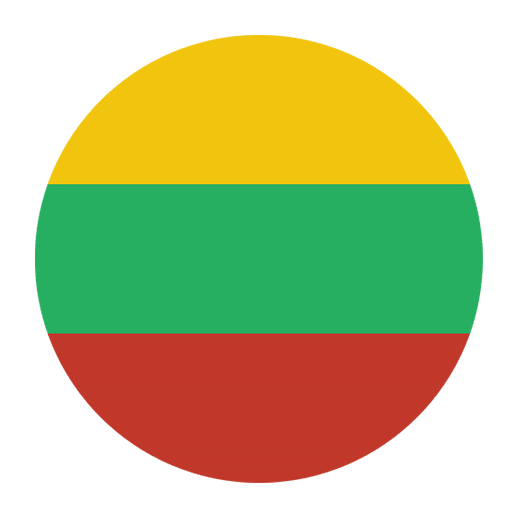Lithuanian, one of the Baltic languages, is often considered unique among its Indo-European relatives due to its archaic features. It serves as a fascinating subject of study for linguists and language enthusiasts alike. In this article, we will compare Lithuanian to other Indo-European languages, exploring its similarities, differences, and peculiarities. By the end, you will gain a deeper understanding of how Lithuanian fits into the larger Indo-European family and what makes it stand out.
The Indo-European Language Family
The Indo-European language family is one of the largest and most widespread linguistic families in the world. It includes languages spoken in Europe, parts of Asia, and even the Americas and Australasia due to colonization and migration. The family is divided into several branches:
1. **Baltic**: Lithuanian, Latvian
2. **Slavic**: Russian, Polish, Czech, Bulgarian, etc.
3. **Germanic**: English, German, Dutch, Swedish, etc.
4. **Romance**: Spanish, French, Italian, Portuguese, Romanian
5. **Indo-Iranian**: Hindi, Persian, Pashto, etc.
6. **Celtic**: Irish, Welsh, Breton, etc.
7. **Hellenic**: Greek
8. **Albanian**: Albanian
9. **Armenian**: Armenian
Lithuanian, as a member of the Baltic branch, has retained many archaic features that have been lost in other branches. This makes it an invaluable resource for linguists studying the history and development of Indo-European languages.
Historical Context
Lithuanian is often described as the most conservative of the living Indo-European languages. This conservatism means that it has retained many features that have disappeared from other Indo-European languages over time. For instance, Lithuanian has preserved more of the original Proto-Indo-European vocabulary and phonology than most other modern languages.
Phonology
Consonants and Vowels
Lithuanian phonology is characterized by a rich inventory of consonants and vowels. One of its most distinctive features is the use of nasal vowels, which are rare among Indo-European languages but can be found in some Slavic languages like Polish.
For example:
– The Lithuanian word for “hand” is “ranka,” where the ‘a’ is nasalized.
– In Polish, the word for “hand” is “ręka,” also with a nasal vowel.
In terms of consonants, Lithuanian has a series of palatalized consonants, similar to Russian. Palatalization refers to the softening of a consonant by raising the middle of the tongue towards the roof of the mouth during pronunciation.
Stress and Intonation
Lithuanian is known for its complex system of stress and intonation. Stress can fall on any syllable of a word and can change the word’s meaning. This characteristic is shared with some other Indo-European languages, such as Russian and Ancient Greek, but is less common in languages like English or German, where stress patterns are more predictable.
Grammar
Noun Declensions
One of the most complex aspects of Lithuanian grammar is its system of noun declensions. Lithuanian nouns are inflected for case, number, and gender. There are seven cases in Lithuanian: nominative, genitive, dative, accusative, instrumental, locative, and vocative. This system is more elaborate than that of many other Indo-European languages. For example, modern English has largely lost its case system, retaining only a few remnants such as possessive ‘s.’
In comparison, other Indo-European languages like Russian and Latin also have complex case systems, but Lithuanian’s is unique in its retention of certain archaic forms. For instance, the Lithuanian locative case has a broader range of uses compared to its counterparts in other languages.
Verb Conjugations
Lithuanian verbs are conjugated for tense, mood, aspect, person, and number. The language has a rich system of verb forms, including a distinct form for each person in both singular and plural. This is somewhat similar to other Indo-European languages like Spanish or Italian, where verb conjugation is also highly inflected.
However, Lithuanian also has retained some archaic features in its verb system. For example, it has a synthetic passive voice, formed by adding specific endings to the verb stem, a feature that has been lost in many other Indo-European languages.
Aspect and Tense
Lithuanian verbs distinguish between perfective and imperfective aspects, similar to Slavic languages like Russian. This means that the language has different forms for actions that are completed and those that are ongoing. For example:
– Lithuanian: “rašyti” (to write) vs. “parašyti” (to have written)
– Russian: “писать” (pisat’) vs. “написать” (napisat’)
In contrast, English uses auxiliary verbs and context to convey these distinctions, rather than inflection.
Vocabulary
Archaic Words
One of the most fascinating aspects of Lithuanian is its retention of many archaic Indo-European words. This makes Lithuanian a valuable resource for linguists studying the Proto-Indo-European language. For example, the Lithuanian word for “sun” is “saulė,” which is very similar to the Proto-Indo-European word “*sóh₂wl̥.”
In comparison, the English word “sun” has undergone significant phonological changes from its Indo-European ancestor. This preservation of ancient vocabulary makes Lithuanian unique among Indo-European languages.
Loanwords
Like all languages, Lithuanian has borrowed words from other languages over time. Due to historical contacts, many loanwords in Lithuanian come from Slavic languages, particularly Polish and Russian. This is similar to how English has borrowed extensively from French and Latin.
For example:
– Lithuanian: “mokykla” (school), borrowed from Polish “szkoła”
– English: “school,” borrowed from Latin “schola” via Old French
However, Lithuanian has also borrowed from German, particularly in the context of trade and technology, much like how English has borrowed from German in scientific and technical fields.
Dialectal Variation
Lithuanian has several dialects, which can be broadly divided into two main groups: Aukštaitian (Highland) and Samogitian (Lowland). These dialects differ in phonology, vocabulary, and even some aspects of grammar.
For example, the word for “bread” is “duona” in Standard Lithuanian but “douna” in the Samogitian dialect. This kind of variation is comparable to dialectal differences in other Indo-European languages, such as the differences between British and American English or the various dialects of Italian.
Writing System
Lithuanian uses the Latin alphabet, but it includes some additional characters to represent sounds specific to the language. For example, the letters “č,” “š,” and “ž” are used to represent sounds that do not exist in English. This is similar to other languages that use modified versions of the Latin alphabet, such as Czech or Croatian.
In comparison, other Indo-European languages like Russian or Greek use entirely different writing systems (Cyrillic and Greek alphabets, respectively). This makes Lithuanian more accessible to speakers of other languages that use the Latin alphabet.
Cultural and Historical Influences
The history of Lithuania has significantly influenced its language. Due to periods of occupation and political unions, Lithuanian has been influenced by Polish, German, and Russian. This is similar to how historical events have shaped other Indo-European languages. For example, the Norman Conquest had a profound impact on the development of English, introducing a large number of French loanwords.
Revival and Standardization
In the 19th and 20th centuries, there was a significant movement to revive and standardize the Lithuanian language. This was part of a broader trend of national awakening in many parts of Europe. The standardization of Lithuanian involved the development of a standardized orthography and the promotion of Lithuanian literature and education.
This process is comparable to similar movements in other countries. For example, the standardization of Italian was heavily influenced by the works of Dante, Petrarch, and Boccaccio. Similarly, the revival of Hebrew as a modern spoken language in Israel is another example of language revival and standardization.
Language Learning Considerations
For English speakers, learning Lithuanian can be both challenging and rewarding. The complexity of its grammar and the richness of its vocabulary make it a fascinating language to study. However, these same features can also pose challenges for learners.
Pronunciation
One of the first challenges that learners may encounter is pronunciation. The nasal vowels and palatalized consonants can be difficult for English speakers to master. Additionally, the stress patterns in Lithuanian are unpredictable, which can make it challenging to learn correct pronunciation.
Grammar
The complexity of Lithuanian grammar is another challenge. The seven cases for nouns and the extensive verb conjugations require a significant amount of memorization and practice. However, understanding these grammatical structures can also provide insights into the structure of other Indo-European languages.
Vocabulary
Learning Lithuanian vocabulary can be both challenging and rewarding. The retention of many archaic Indo-European words means that learning Lithuanian can provide insights into the history and development of the Indo-European language family. However, the large number of loanwords from Slavic languages can also pose challenges for learners who are not familiar with these languages.
Conclusion
Lithuanian is a unique and fascinating member of the Indo-European language family. Its retention of many archaic features makes it an invaluable resource for linguists studying the history and development of Indo-European languages. For language learners, Lithuanian offers both challenges and rewards. The complexity of its grammar and the richness of its vocabulary provide a window into the history and structure of the Indo-European language family. Whether you are a linguist, a language enthusiast, or simply curious about the world of languages, Lithuanian is a language that is well worth exploring.

